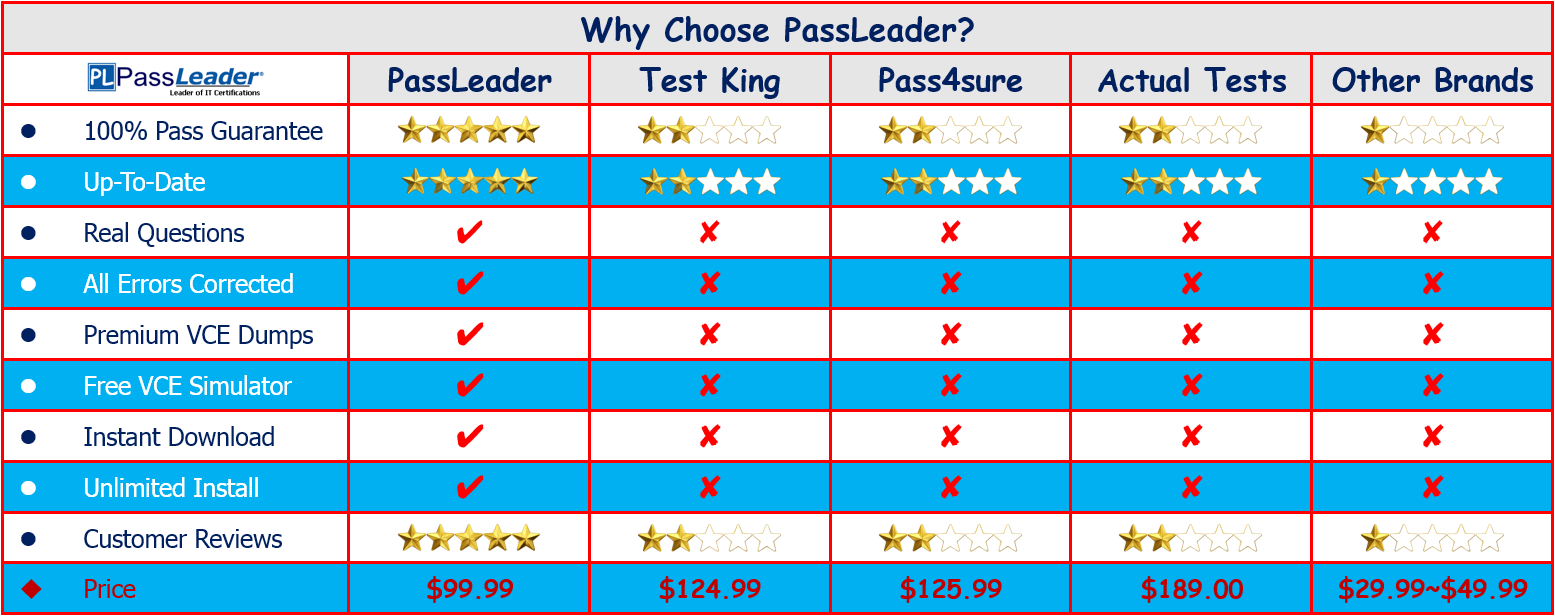Chapter 1 – Implement VLAN based solution, given a network design and a set of requirements
QUESTION NO: 31
What action should a network administrator take to enable VTP pruning on an entire management domain?
A. Enable VTP pruning on any client switch in the management domain.
B. Enable VTP pruning on any switch in the management domain.
C. Enable VTP pruning on every switch in the management domain.
D. Enable VTP pruning on a VTP server in the management domain.
E. Disable VTP pruning on a VTP server in the management domain.
Answer: D
Explanation:
Enabling VTP pruning on a VTP server allows pruning for the entire management domain. Enabling this on the VTP server will mean that the VTP pruning configuration will be propagated to all VTP client switches within the domain. VTP pruning takes effect several seconds after you enable it. By default, VLANs 2 through 1000 are pruning-eligible.
Reference: Building Cisco Multilayer Switched Networks (Cisco Press) page 117
QUESTION NO: 32
Switch R1 is configured with VTP. Which two VTP modes will make R1 capable of creating and deleting VLANs on itself? (Select two)
A. Client
B. Server
C. Transparent
D. Pass-through
E. No-negotiate
Answer: B,C
Explanation:
VTP Modes
You can configure a switch to operate in any one of these VTP modes:
If you configure the switch as VTP transparent, you can create and modify VLANs but the changes affect only the individual switch.
QUESTION NO: 33
When the Catalyst switch R1 is enabled to use VTP, which information does it advertise on its trunk ports? (Select two)
A. VTP mode
B. STP root status
C. Negotiation status
D. Management domain
E. Configuration revision number
Answer: D,E
Explanation:
The VTP protocol maintains VLAN configuration consistency throughout the network by distributing VLAN information to the network. VLAN information is sent to network devices in advertisements that contain the VTP management domain name, the current configuration revision number, the VLANs that the server knows about, and certain VLAN parameters. Any time you change a VLAN, VTP automatically sends an advertisement to update all other network devices.
QUESTION NO: 34
Which three statements are true regarding the above diagram? (Choose three.)
A. DTP packets are sent from Switch B.
B. The native VLAN for Switch B is vlan 1.
C. A trunk link will be formed.
D. DTP is not running on Switch A.
E. Only VLANs 1-1001 will travel across the trunk link.
Answer: A,B,C
Explanation:
You can manually configure trunk links on Catalyst switches for either ISL or 802.1Q mode. In addition, Cisco has implemented a proprietary, point-to-point protocol called Dynamic Trunking Protocol (DTP) that negotiates a common trunking mode between two switches. The negotiation covers the encapsulation (ISL or 802.1Q) as well as whether the link becomes a trunk at all.
QUESTION NO: 35
Two Company switches are connected via a trunk link. In this network, the original frame is encapsulated and an additional header is added before the frame is carried over a trunk link. At the receiving end, the header is removed and the frame is forwarded to the assigned VLAN. This describes which technology?
A. DISL
B. ISL
C. DTP
D. IEEE 802.1Q
E. MPLS
F. None of the other alternatives apply
Answer: B
Explanation:
Inter-Switch Link Protocol
The Inter-Switch Link (ISL) protocol is a Cisco proprietary method for preserving the source VLAN identification of frames passing over a trunk link. ISL performs frame identification in Layer 2 by encapsulating each frame between a header and trailer. Any Cisco switch or router device configured for ISL can process and understand the ISL VLAN information. ISL is primarily used for Ethernet media, although Cisco has included provisions to carry Token Ring, FDDI, and ATM frames over Ethernet ISL. (A Frame-Type field in the ISL header indicates the source frame type.) When a frame is destined out a trunk link to another switch or router, ISL adds a 26-byte header and a 4-byte trailer to the frame. The source VLAN is identified with a 10-bit VLAN ID field in the header. The trailer contains a cyclic redundancy check (CRC) value to ensure the data integrity of the new encapsulated frame. Figure 6-3 shows how Ethernet frames are encapsulated and forwarded out a trunk link. Because tagging information is added at the beginning and end of each frame, ISL is sometimes referred to as double tagging.
All Cisco CCNP SWITCH 642-813 Exam Questions with Explanation are come from Lead2pass CCNP SWTICH 642-813 exam questions, please visit here http://www.lead2pass.com/cisco/642-813.html

